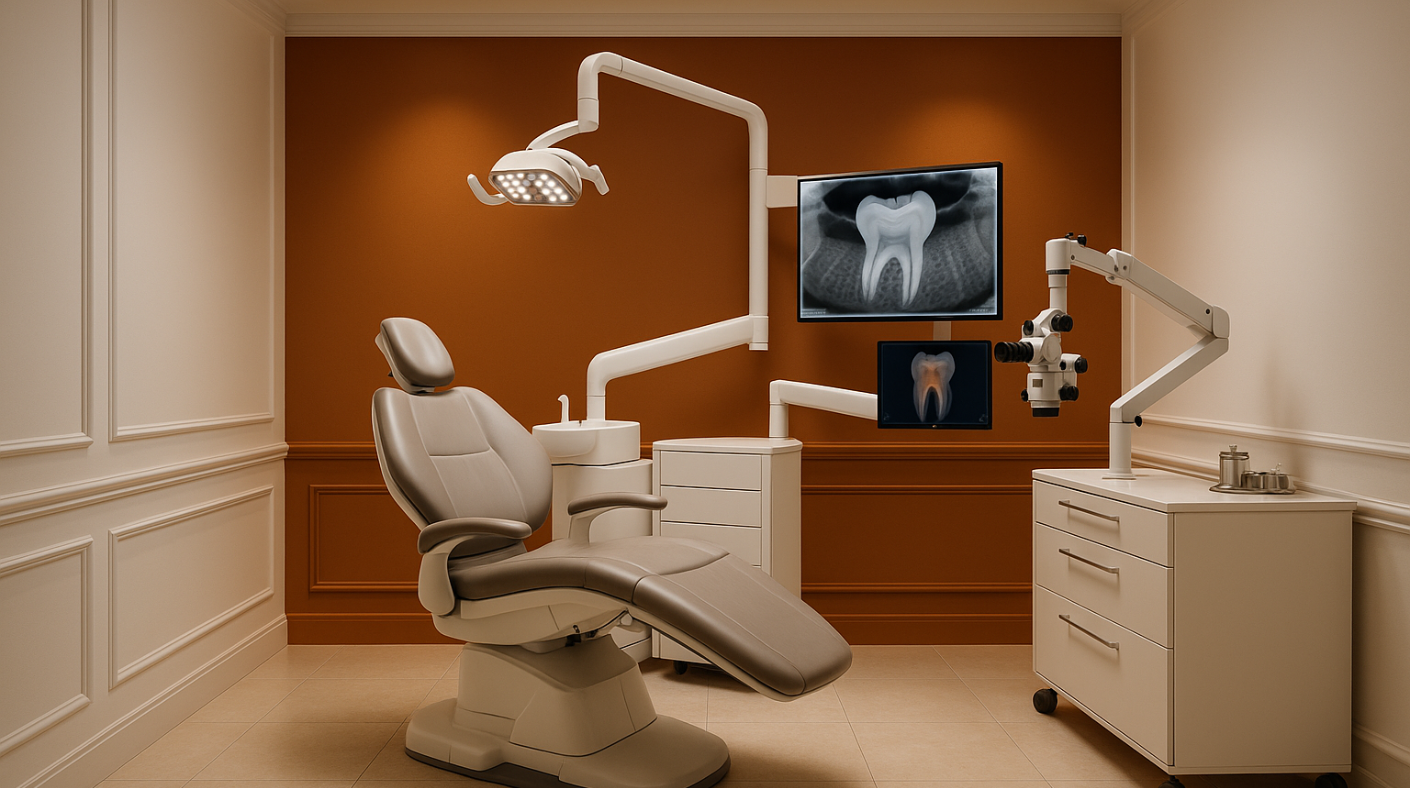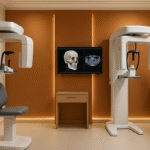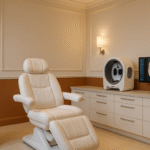- At Home GP Consultations
- IV Therapy at SwissMed Clinic
- Veneers at SwissMed Clinic
- Expert Dermatology Care at SwissMed Clinic
- CBCT & OPG Dental Imaging at SwissMed Clinic
- Laser Hair Removal at SwissMed Clinic
- Dental Imaging and Diagnostics at SwissMed Clinic
- Orthodontics at SwissMed Clinic
- Paediatric Dentistry at SwissMed Clinic
- Dental Implants at SwissMed Clinic
- Oral Surgery at SwissMed Clinic
- Endodontics at SwissMed Clinic
- Restorative Dentistry at SwissMed Clinic
- Cosmetic Dentistry at SwissMed Clinic
- General Dentistry at SwissMed Clinic

Endodontics at SwissMed Clinic
Endodontic care at SwissMed Clinic focuses on saving natural teeth, removing infection, and relieving pain with precise, conservative treatments. Your plan is built on a thorough diagnosis, careful explanation of options, and predictable techniques that protect remaining tooth structure while restoring comfort and function.
Root Canal Treatment
A root canal becomes necessary when the dental pulp is inflamed or infected due to deep decay, cracks, or trauma. Treatment begins with local anaesthesia and isolation of the tooth for a clean, controlled field. The inflamed tissue is gently removed and the canals are shaped with modern rotary instruments to create smooth, disinfectable pathways. Activated irrigation solutions dissolve bacteria and debris, and electronic measurements help your dentist determine accurate working lengths. Once the tooth is clean and dry, the canals are sealed three dimensionally to prevent reinfection. A definitive restoration then rebuilds strength and seals the access cavity. Back teeth and heavily restored teeth often benefit from a crown to protect against future fractures; your dentist will advise on the best restorative choice for long term stability.
Retreatment of Failed Root Canals
If symptoms persist after a previous root canal, or if a tooth reinfects years later, retreatment can often save the tooth without extraction. The process involves removing the old root filling and any leaking restorations, locating missed or calcified canals under magnification, and disinfecting the root system again with improved instruments and irrigation protocols. Where the anatomy is complex or previous materials are difficult to remove, your dentist will pace the procedure across staged visits to keep you comfortable and to ensure thorough disinfection. In selected cases, repair materials are used to seal perforations or resorption defects. If a persistent lesion does not respond to retreatment, your clinician will discuss adjunctive options such as endodontic microsurgery and will explain when referral is in your best interest.
CBCT-Guided Diagnostics
Three dimensional CBCT imaging adds clarity when conventional X-rays are inconclusive. A low dose scan can reveal extra canals, hidden fractures, unusual curvatures, and the true extent of lesions, while also showing the relation of roots to the sinus or the nerve canal. This information helps your dentist plan safe access pathways, select the correct working length, and choose the most predictable approach for your tooth. Because CBCT and OPG are available on site, imaging and interpretation are coordinated quickly, which reduces uncertainty and shortens decision making.
Your First Visit and Treatment Journey
Your appointment begins with a focused assessment of symptoms, vitality testing, digital radiographs, and, when indicated, CBCT imaging. You will receive a clear explanation of findings and a written plan that sets out the number of visits, fees, and expected recovery. If you arrive in pain, the priority is to relieve pressure inside the tooth and settle the surrounding tissues, often with immediate drainage and medication where appropriate. Treatment sessions are designed for comfort, with careful anaesthesia, gentle technique, and measured steps. After the canals are sealed, the tooth is restored to full function and scheduled for maintenance checks.
Restoring the Tooth After Endodontics
A root treated tooth must be sealed properly to prevent leakage and fracture. Small access cavities can be closed with bonded composite. Larger cavities or posterior teeth usually benefit from cuspal coverage with an onlay or crown to distribute biting forces safely. Your dentist will explain the material options and the aesthetic considerations so the final result blends with your smile and performs reliably.
Frequently asked questions Endodontics
Will a root canal hurt
Modern local anaesthesia and careful technique make the procedure comfortable. Any post treatment tenderness is usually mild and short lived and can be managed with routine analgesics. Your dentist will give tailored advice based on your case.
How long does a root canal take
Simple cases are often completed in a single extended visit. Complex anatomy, long standing infections, or retreatment may require additional appointments to ensure thorough disinfection before sealing.
Do I always need a crown after a root canal
Not always. The need for a crown depends on how much tooth structure remains and where the tooth sits in the mouth. Molars and heavily filled teeth are more prone to fracture and often benefit from cuspal coverage for durability.
Why would a root canal fail
Persistent bacteria, missed canals, leaking restorations, or cracks can allow reinfection. Retreatment addresses these issues by reopening the tooth, removing old materials, disinfecting thoroughly, and resealing the canals with an improved strategy.
Is CBCT necessary for every case
CBCT is used selectively when it will change diagnosis or planning. It is particularly helpful for unusual anatomy, identifying missed canals, assessing resorption, or evaluating proximity to vital structures.
Can antibiotics cure a tooth infection without treatment
Antibiotics may reduce symptoms temporarily but they cannot remove infected tissue inside the tooth. Definitive treatment requires root canal therapy or extraction to eliminate the source.
What are the alternatives to a root canal
The main alternative is extraction, followed by options to replace the missing tooth such as an implant, bridge, or denture. In many cases, saving your natural tooth with endodontic treatment is the most conservative and functional choice.
How successful is retreatment
Retreatment has a high success rate when the cause of failure is identified and corrected, especially when supported by CBCT diagnosis and proper restoration. Your dentist will discuss your specific prognosis after assessment.
Book Your Cosmetic Endodontic Consultation
If you have toothache, sensitivity to hot or cold, biting pain, or swelling, contact SwissMed Clinic in Dubai to arrange an endodontic assessment. We will diagnose the cause, explain your options clearly, and provide a plan that relieves pain and preserves your natural tooth whenever possible.








